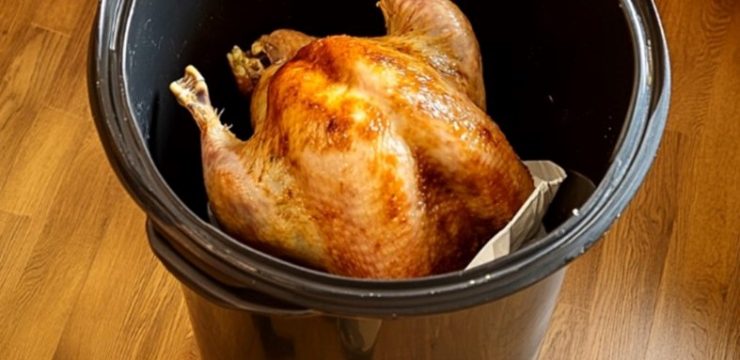As we age, it’s normal for teeth to lose some of their brightness. Your mother may have noticed her smile becoming less vibrant, but she doesn’t have to accept a duller look. While professional dental treatments offer quick results, they can be costly. Fortunately, there are natural methods to safely whiten teeth at home. These options are not only effective but also budget-friendly, helping your mother achieve a brighter smile without breaking the bank. Let’s explore some practical at-home techniques to naturally restore her smile’s shine.

Why Do Teeth Become Discolored with Age?
Before diving into whitening methods, it’s helpful to understand why teeth become discolored as we get older:
- Enamel Thinning: The enamel, the outer layer of the tooth, wears down over time, revealing the yellowish dentin underneath.
- Diet and Lifestyle: Regular consumption of coffee, tea, red wine, and tobacco can lead to surface stains on teeth.
- Oral Hygiene: Inconsistent brushing and flossing can cause plaque buildup, resulting in discoloration.
- Medications: Certain drugs, such as tetracycline antibiotics, can cause long-term discoloration of teeth.
Now that we understand the causes, let’s look at some natural remedies that can help brighten teeth without professional interventions.
1. Baking Soda and Hydrogen Peroxide Paste
One of the most common home remedies for teeth whitening is a paste made from baking soda and hydrogen peroxide. Baking soda acts as a gentle abrasive, while hydrogen peroxide is an antibacterial agent that helps remove stains.
- How to Use It: Mix 1 teaspoon of baking soda with a few drops of hydrogen peroxide to create a paste. Brush your teeth gently for about two minutes, then rinse thoroughly.
- Frequency: Use this method a few times a week, but avoid overusing it, as excessive scrubbing can wear down enamel.
This simple combination can effectively lift surface stains, making it a reliable option for keeping teeth bright.
2. Oil Pulling with Coconut Oil
Oil pulling is an ancient practice that involves swishing oil in the mouth to remove bacteria and improve oral health. Coconut oil, which contains lauric acid, is especially effective due to its antibacterial properties.
- How to Do It: Place a tablespoon of coconut oil in your mouth and swish for 15-20 minutes. Spit the oil into a trash can (not the sink, as it can clog drains).
- Benefits: In addition to whitening, oil pulling can help reduce plaque buildup and promote gum health.
- Tip: Start with a shorter duration, like 5 minutes, and gradually increase to avoid jaw fatigue.
While this technique is slower to show visible results, it’s a gentle and natural way to improve oral health.
3. Apple Cider Vinegar (ACV) Rinse
Apple cider vinegar is known for its natural cleaning properties, including its ability to break down stains on teeth. Its mild acidity can help dissolve plaque and discoloration.
- How to Use It Safely: Dilute 1 part ACV with 3 parts water and swish it around your mouth for 30 seconds. Rinse thoroughly with water afterward to remove any residual acid.
- Precaution: Limit its use to once or twice a week, as frequent exposure can erode enamel.
ACV acts as a natural mouthwash that helps tackle stains while keeping the mouth clean.
4. Crunchy Fruits and Vegetables
Believe it or not, what you eat can impact the color of your teeth. Crunchy fruits and vegetables act like natural toothbrushes, helping to scrub away plaque and surface stains.
- Strawberries and Pineapple: Strawberries contain malic acid, which can help lift surface stains, while pineapple contains an enzyme called bromelain, which helps break down discoloration.
- Celery, Carrots, and Apples: These crunchy foods stimulate saliva production, which naturally cleanses the mouth and washes away food particles.
Encourage your mother to include more of these foods in her diet for better oral health and brighter teeth.
5. Activated Charcoal
Activated charcoal is known for its porous structure, which helps absorb toxins and remove stains from the surface of teeth. Though it may seem odd to use a black powder for whitening, many people find it effective.
- How to Use It: Wet a toothbrush, dip it into activated charcoal powder, and gently brush for 2-3 minutes. Rinse thoroughly to remove all the charcoal residue.
- Frequency: Limit use to once a week, as its abrasive nature can damage enamel with frequent use.
Activated charcoal provides a noticeable whitening effect by lifting surface stains, but be sure to use it sparingly to protect tooth enamel.
Maintaining Good Oral Hygiene Habits
Natural remedies work best when combined with good oral hygiene. Here are a few habits to maintain a brighter smile:
- Brush Twice Daily: Use fluoride toothpaste and brush for at least two minutes each time.
- Floss Daily: Flossing helps remove food particles and plaque between teeth, reducing the risk of discoloration.
- Limit Staining Foods and Beverages: Reduce consumption of coffee, tea, red wine, and soda to avoid further staining.
- Use a Straw: Drink staining beverages through a straw to minimize contact with teeth.
These habits are not only effective for keeping teeth bright but also promote healthier gums and fresher breath.
Conclusion: Achieving a Whiter Smile Naturally
Aging may naturally dim teeth, but natural remedies combined with consistent oral care can help maintain a brighter smile over time. From baking soda paste to oil pulling, these simple techniques are effective, affordable, and easy to incorporate into daily routines. While they may not deliver instant results like professional treatments, they offer a safer, long-lasting approach to teeth whitening. With dedication and the right methods, your mother can enjoy a brighter, healthier smile—without the high costs.





